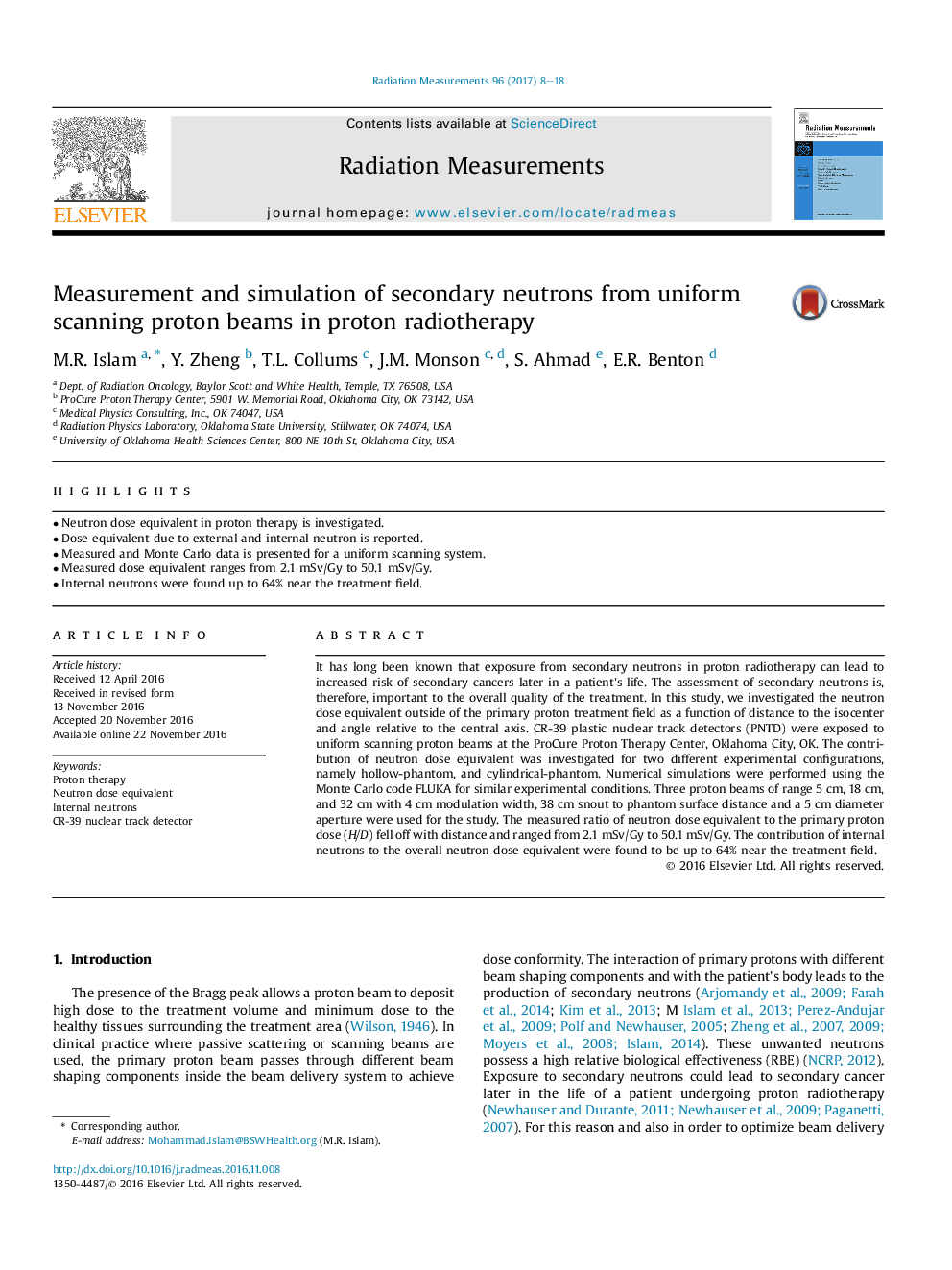| Article ID | Journal | Published Year | Pages | File Type |
|---|---|---|---|---|
| 5498891 | Radiation Measurements | 2017 | 11 Pages |
Abstract
It has long been known that exposure from secondary neutrons in proton radiotherapy can lead to increased risk of secondary cancers later in a patient's life. The assessment of secondary neutrons is, therefore, important to the overall quality of the treatment. In this study, we investigated the neutron dose equivalent outside of the primary proton treatment field as a function of distance to the isocenter and angle relative to the central axis. CR-39 plastic nuclear track detectors (PNTD) were exposed to uniform scanning proton beams at the ProCure Proton Therapy Center, Oklahoma City, OK. The contribution of neutron dose equivalent was investigated for two different experimental configurations, namely hollow-phantom, and cylindrical-phantom. Numerical simulations were performed using the Monte Carlo code FLUKA for similar experimental conditions. Three proton beams of range 5Â cm, 18Â cm, and 32Â cm with 4Â cm modulation width, 38Â cm snout to phantom surface distance and a 5Â cm diameter aperture were used for the study. The measured ratio of neutron dose equivalent to the primary proton dose (H/D) fell off with distance and ranged from 2.1Â mSv/Gy to 50.1Â mSv/Gy. The contribution of internal neutrons to the overall neutron dose equivalent were found to be up to 64% near the treatment field.
Related Topics
Physical Sciences and Engineering
Physics and Astronomy
Radiation
Authors
M.R. Islam, Y. Zheng, T.L. Collums, J.M. Monson, S. Ahmad, E.R. Benton,
